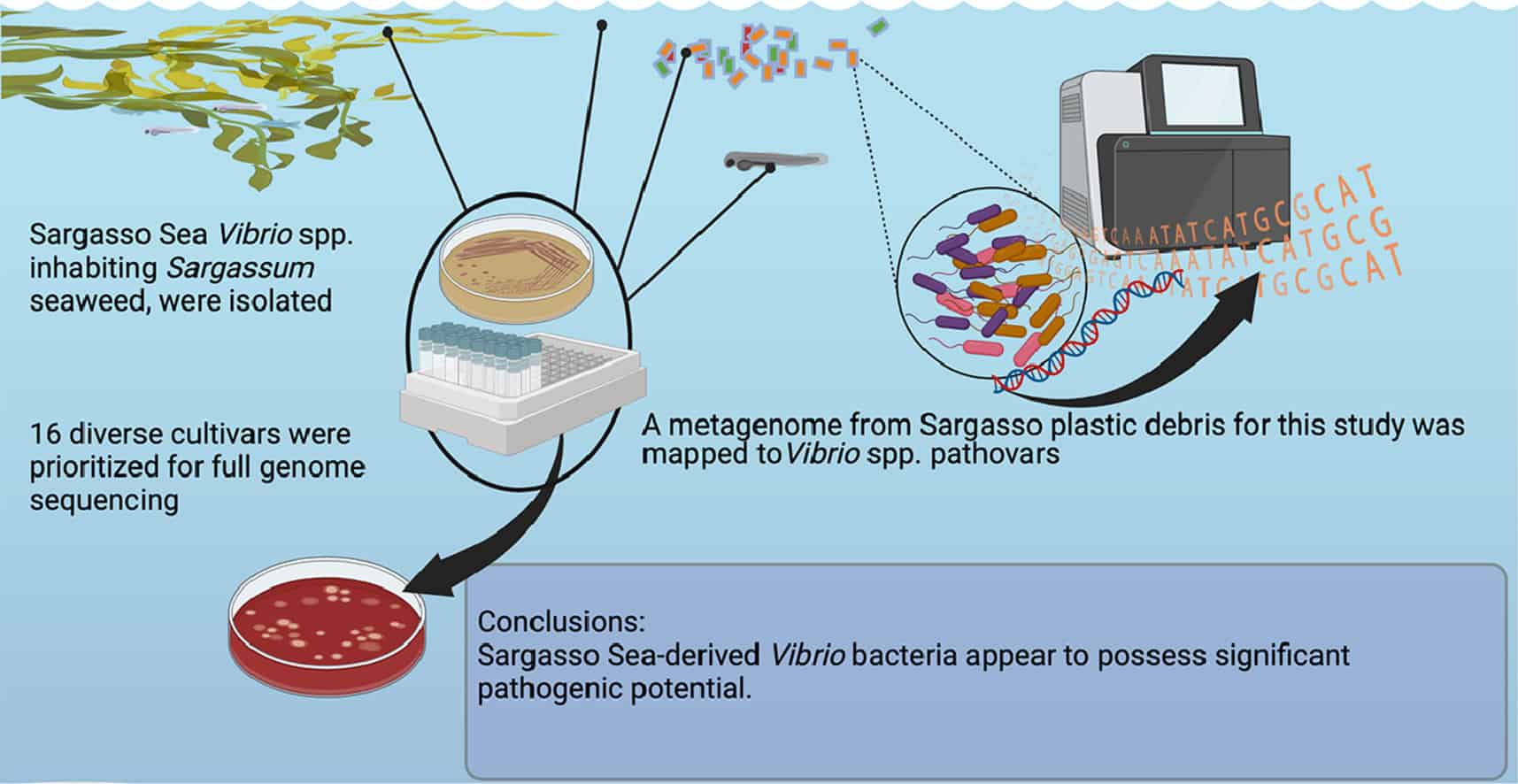An enormous expanse of seaweed, stretching across the Caribbean and surpassing the width of the United States, is not only bringing vast quantities of algae but also disease-causing bacteria, according to a new study. Moreover, the problem could be exacerbated by the mounting accumulation of plastic we dispose of in our oceans.

Sargassum, a type of seaweed, has been known to create extensive blooms in the Atlantic Ocean for a long period of time. Scientists have monitored the significant accumulations of this seaweed since 2011. However, the current bloom surpasses all previous records in terms of size, covering an area of more than 8,000 kilometers.
When adrift in the ocean, sargassum serves as a vital habitat to various marine animals such as fish, mammals, crabs, and marine birds. However, there can be negative consequences when this seaweed accumulates. Researchers found the interaction between sargassum, plastics and bacteria creates a potentially harmful combination.
In their study, the team analyzed the genomes of bacteria that belong to a genus called Vibrio, which includes over 100 species. They found the bacteria on samples of plastic debris and sargassum that were taken from the North American Ocean. The goal was to see whether the species in the samples could cause diseases in humans.
“Our lab work showed that these Vibrio are extremely aggressive and can seek out and stick to plastic within minutes. We also found that there are attachment factors that microbes use to stick to plastics, and it is the same kind of mechanism that pathogens use,” Tracy Mincer, study author and ocean researcher, said in a media statement.
Dangerous bacteria
Vibrio bacteria are naturally present in certain coastal waters and tend to proliferate at higher concentrations during the warmer months, typically between May and October. About 12 species have the potential to cause vibriosis, an illness that affects humans. It’s contracted by eating raw, undercooked or badly stored shellfish, mainly oysters.

In the plastic and sargassum samples collected, the researchers found multiple species of Vibrio bacteria, some of which have never been seen before. Some had “significant pathogenic potential,” according to genome analysis. In experiments in the lab, the bacteria attached to and colonized plastic samples with impressive efficiency.
Previous research showed that Vibrio pathogens have a tendency to colonize floating marine plastic. However, the researchers are the first ones to sequence their genomes from a sample found in the natural environment. The findings suggest Vibrio may be adapting to the open ocean in a way that could be risky to animal and human health.
The researchers said we should delay harvesting seaweed, a solution some experts have suggested to convert its abundance to food or biofuel. As seaweed and plastic debris mix in the ocean, they could tangle up and trade microbes, potentially leading to dangerous health problems. That’s why sargassum should not be touched for now.
“I don’t think at this point, anyone has really considered these microbes and their capability to cause infections,” said Mincer. “We really want to make the public aware of these associated risks. In particular, caution should be exercised regarding the harvest and processing of Sargassum biomass until the risks are explored more thoroughly.”
The study was published in the journal Water Research.









